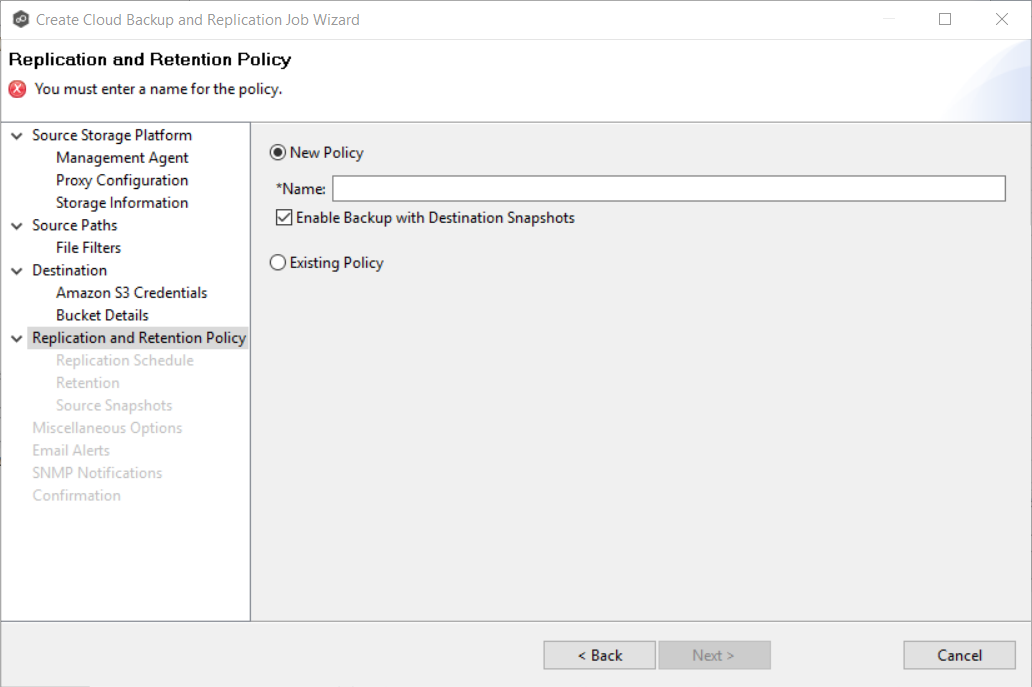Each Cloud Backup and Replication job must have a Replication and Retention policy. A Replication and Retention policy specifies:
•How often you want to scan the storage device for replication or if you want to replicate in real-time.
•Whether you want to take snapshots of the data. A snapshot captures the state of a file system at a point in time. There are two types of snapshots:
▪A destination snapshot captures an image of the data on the destination storage device immediately after replication. Destination snapshots are useful for recovering data from different period of times. Destination snapshots track versions of changed files and file system structure that can be used for data recovery. For more information about recovering data, see Recovering Data.
▪A source snapshot captures an image of the data on the source storage device immediately before replication. Sources snapshots are useful for replicating open and locked files, which otherwise may not be able to be replicated. A source snapshot also ensures that the replicated data is coming from a static version of the source file system. For details about using source snapshots, see Step 13: Source Snapshots.
•How long you want to retain destination snapshots.
The Replication and Retention Policy page enables you to create a new Replication and Retention policy or choose an existing policy.
1.Select New Policy or Existing Policy.

2.If you selected Existing Policy, select a policy from the drop-down list, and then click Next. Continue with Step 14. Miscellaneous Options.
If you selected New Policy, enter a name for the policy in the Name field.
3.Select Enable Backup with Destination Snapshots if you want to replicate what is on premises to the destination storage device, while taking destination snapshots at specified points in times.
4.Click Next.
The Replication Schedule page appears.